#Phyllobates bicolor
Explore tagged Tumblr posts
Text
Phyllobates Doing A Hongi

Phyllobates bicolor or black-legged poison dart frogs sharing a Maori greeting in in their tank in Reptopia. Photo credit: Eleanor Chua.
The tank was very dimly lit and the ISO had need to be pushed to 6400 to get a shutter speed of a mere 1/80 second for this 300mm crop. Thankfully, the image came out sharp although details weren’t that great.
#photographers on tumblr#black-legged poison dart frog#canon eos rp#canon photography#flora fauna#photography tips#Phyllobates bicolor#reptile pics#tamron 16-300mm#wildlife photography#wildlife pics
33 notes
·
View notes
Text
Phyllobates bicolor, black-legged poison dart frog
0 notes
Text
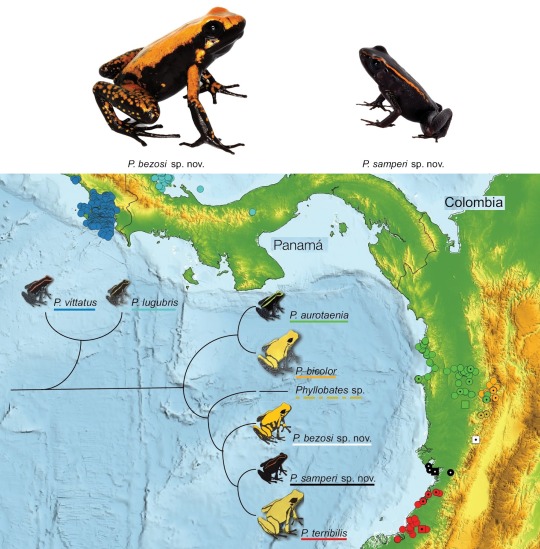
Molecular phylogenetics uncovers two new species in the genus Phyllobates (Anura, Dendrobatidae): the terrible frog gets two new sisters
Adolfo Amézquita, Fernando Vargas-Salinas, Iván Ramos, Pablo Palacios-Rodríguez, Erika Nathalia Salazar, Michelle Quiroz, Wilmar Bolívar, Diana M. Galindo-Uribe, Luis A. Mazariegos-H
Abstract
True poison-dart frogs (Phyllobates, Dendrobatidae) evolved the ability to secrete batrachotoxins, the most powerful alkaloids known to date. The genus comprises five species whose systematics, at first glance, appeared clear. The most derived clade would include two Colombian species (P. terribilis and P. bicolor) with the highest toxicity, the largest body size, and predominantly yellow body colouration. The other three species (P. aurotaenia, P. vittatus, and P. lugubris) are less toxic on average, have smaller size, and are predominantly black with bright dorsolateral stripes. Recent research has revealed the existence of two major lineages among the three Colombian species. The northern lineage appears to result from a complex evolutionary history, including perhaps introgression among yellow and black taxa. The southern lineage instead revealed the existence of new clades closely related to P. terribilis, black and yellow, that arguably deserve their recognition as new species. Here, available evidence is combined to support the erection of southern populations of P. aurotaenia as a new highly toxic species, sister to P. terribilis, and much closer to it than to any other yellow or black-bodied species, Phyllobates samperi sp. nov. Their common ancestor is sister to an additional yellow species, which we also describe here as Phyllobates bezosi sp. nov. Both new species can be externally diagnosed using colouration. Our previous and current analyses also suggest the existence of additional taxa and corroborate multiple transitions in colouration across these hypertoxic taxa.
Read the paper here:
Molecular phylogenetics uncovers two new species in the genus Phyllobates (Anura, Dendrobatidae): the terrible frog gets two new sisters (pensoft.net)
#poisonous#toxic#phyllobates#poison dart frog#dendrobatidae#frog#amphibian#herpetology#animals#nature#south america
104 notes
·
View notes
Photo

さわるだけで危ないらしい、ヒィッ!
@KawaZoo
21 notes
·
View notes
Photo

Black-legged Poison Dart Frog
Phyllobates bicolor (Wikipedia) (Encyclopedia Of Life)
by Drriss & Marrionn
19 notes
·
View notes
Text
Les grenouilles les plus toxiques du monde
Nouvel article publié sur https://www.2tout2rien.fr/les-grenouilles-les-plus-toxiques-du-monde/
Les grenouilles les plus toxiques du monde
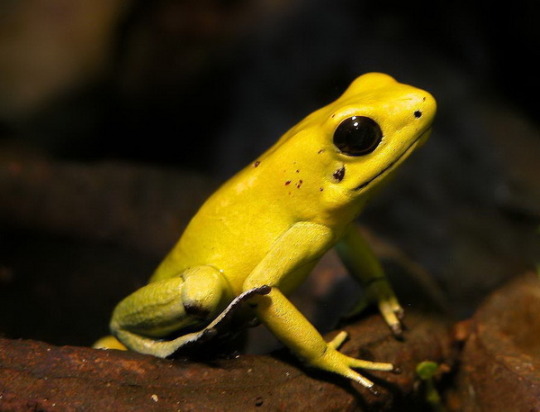
#batracien#Dendrobates azureus#Dendrobates leucomelas#fraise#grenouille#Okopipi#Oophaga pumilio#Phyllobates aurotaenia#Phyllobates lugubris#Phyllobates terribilis#Phyllomedusa bicolor#poison#rainette#toxine#toxique#venimeux#venin#animaux#imxok
4 notes
·
View notes
Video
Bicolored dart frog - Phyllobates bicolor by Francisco Herrera Via Flickr: Bicolored dart frog - Phyllobates bicolor Amazon and Beyond, Zoo Miami
#Dendrobatidae#Nature#Phyllobates#Frog#Zoo#Animal#Amphibia#Zoo Miami#Bicolored dart frog#Amphibian#Anfibio#Animals#Anura#Miami#Phyllobates bicolor#Poison dart frog#Rana#black-legged poison frog#dart-poison frog#neari#poison arrow frog#poison frog#Florida#United States#US
5 notes
·
View notes
Photo
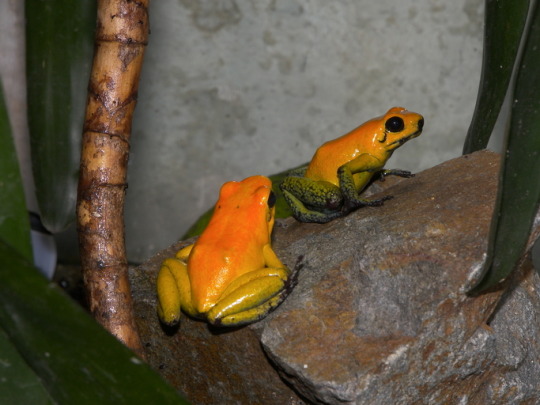

Phyllobates bicolor, or the black-legged poison frog, is a species of dart frog native to the Choco region of western Colombia. This is the second most toxic species of dart frog, second only to Phyllobates terribilis. They should not be underestimated, though; P. bicolor is one of the few dart frog species with confirmed human fatalities. Images by Esteban Alzate and Joern Koehler.
727 notes
·
View notes
Photo

Bicolor poison dart frog
Phyllobates bicolor
Smithsonian’s National Zoo
1 note
·
View note
Text
Dart frogs for sale

These frogs occur in several different color patterns. Unlike many other poison dart frogs, this species is semi-arboreal and will often climb above the enclosure floor. They aren’t as toxic as some other dart frogs, but they are dangerous enough to cause human deaths. The green and black dart frogs available in the pet trade are often wild-caught individuals, so care is required when moving or transporting them. They were also introduced to Hawaii in the 1930s to help reduce local mosquito populations. This species has a relatively expansive range relative to many other poison dart frogs, which encompasses a region stretching from Nicaragua and Costa Rica to northern Columbia. And although many advanced keepers eventually move on to other species, this species is typically considered the best one for beginners to choose. The green and black poison dart frog is likely the most commonly kept species in captivity. Green and Black Poison Dart Frog ( Dendrobates auratus) Try to pick the ones that are best suited for your situation and that you find appealing. One of the most appealing aspects of poison dart frogs for amphibian enthusiasts is the diverse array of species that are available.īelow, we’ll provide you with some of the basic information about seven of the most commonly seen species. Instead, the vast majority of poison dart frogs in captivity are members of a handful of genera, including Dendrobates, Phyllobates, Ranitomeya and Epipedobates. However, frogs from most of these genera are not available in the pet trade – at least, not in significant numbers. The currently recognized poison dart frog genera are as follows: Poison dart frogs are all thought to be descendants of a single, ancestral species, but some of the extant species are more closely related to each other than some others are.Īccordingly, scientists place the various species in one of 16 different groups called genera (singular: genus). But these 200-odd species aren’t all equally closely related. Nevertheless, these species are all part of a single group, called the family Dendrobatidae. It’s difficult to identify the exact number of described species, as authorities often differ on some of the minor points of poison dart frog taxonomy. Scientists currently recognize approximately 200 species of poison dart frog. Always Opt for Captive-Bred Specimens When Possible.Reticulated Poison Dart Frog (Ranitomeya ventrimiculata) Bicolor Poison Dart Frog (Phyllobates bicolor) Golden Poison Dart Frog (Phyllobates terribilis) Anthony’s Poison Dart Frog (Epipedobates anthonyi) Yellow-Striped Poison Dart Frog (Dendrobates truncates) Dyeing Poison Dart Frog (Dendrobates tinctorius) Bumblebee Poison Dart Frog (Dendrobates leucomelas) Green and Black Poison Dart Frog (Dendrobates auratus)

0 notes
Photo

Black-legged Poison Dart Frog, Phyllobates bicolor
Conservation Status: Near Threatened, In Decline The Poison Frogs (family Dendrobatidae) are a colorful and fascinating group of amphibians. Frogs in this family secret poison from their granular glands with a level of toxicity that varies from species to species. Their bold colors (reds, blues, yellows and oranges) are warnings to predators that the frog is toxic and dangerous. These colors are the opposite of camouflage — the frogs are trying to stand out — and the warning colors (or aposematic coloration) effectively convey the message to predators before any attempt is made to eat the frog. Even though there are almost 200 species of Poison Frog, only a few species are lethal to humans (like the one pictured here). The most toxic Poison Frogs can kill a half dozen adult humans just by touching it! These select few are also known as Poison Dart Frogs because they are used (by native South American Amerindians) for blow dart hunting. Once a dart is tipped with the secretions from one of these frogs, it can kill for up to 6 months. Despite the incredible lethality of these frogs, they are still endangered and declining. Their toxicity doesn’t aid them against the pressures that all amphibians are facing globally such as habitat loss, emergent infectious disease, pollution and harvesting. #PoisonAF (at The Amphibian Foundation)
5 notes
·
View notes
Photo
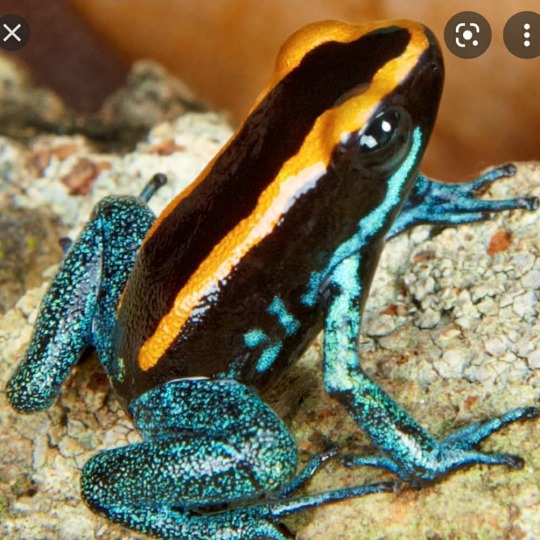
Mooie kikkers te koop waaronder F1 Phyllobates bicolor Uraba Tesoros nakweek. (bij Zundert, Netherlands) https://www.instagram.com/p/CRW_oBwMTRk/?utm_medium=tumblr
0 notes
Text
collect a few of the Phyllobates terribilis [ golden poison frog ] and a few of the Phyllobates bicolor [ black legged poison frog ] ....they may look super cute but beware ... only 2 micrograms of their poison [ their sweat ] is enough for execute someone


anyone interested in talking about poisons or murder ... hmu
83 notes
·
View notes
Text

Black-legged Poison Frog (Phyllobates bicolor), endemic to Colombia
ENADANGERED. VERY Poisonous.
photograph by Mauricio Morales
152 notes
·
View notes
Text
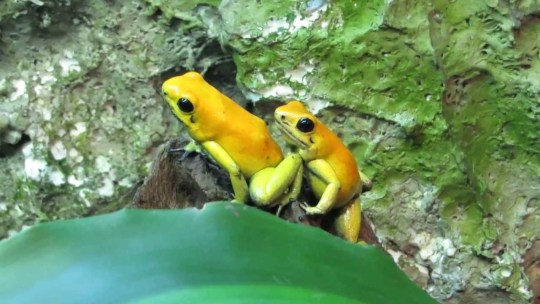
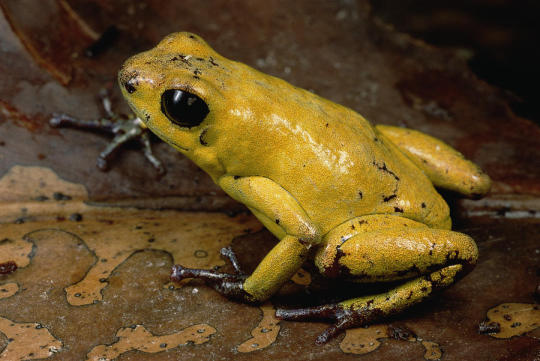
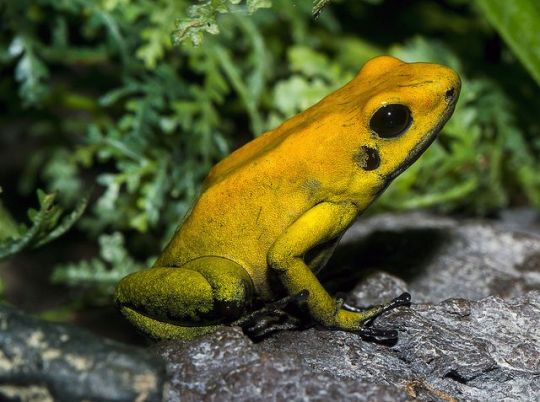
Black-legged poison frog [Phyllobates bicolor], is a species of dart frog native to the Choco region of western Colombia. This is the second most toxic species of dart frog, second only to Phyllobates terribilis. They should not be underestimated, though; P. bicolor is one of the few dart frog species with confirmed human fatalities.
0 notes
Text
Silverstone's Poison Frog
#FaunaFocus Prior to the Silverstone's poison frog's official description in 1979 as Ameerega silverstonei, it was known under incorrect names, such as Phyllobates bicolor or Epipedobates silverstonei. #PoisonFrog #PoisonFrogs #Frog #Frogs
Prior to the Silverstone’s poison frog’s official description in 1979 as Ameerega silverstonei, it was known under incorrect names, such as Phyllobates bicolor or Epipedobates silverstonei.
The Silverstone’s poison frog was discovered in the 1940’s during road construction across the Cordillera Azul on the Amazonian flank of the Peruvian Andes. John C. Pallister collected the first specimen in…
View On WordPress
0 notes